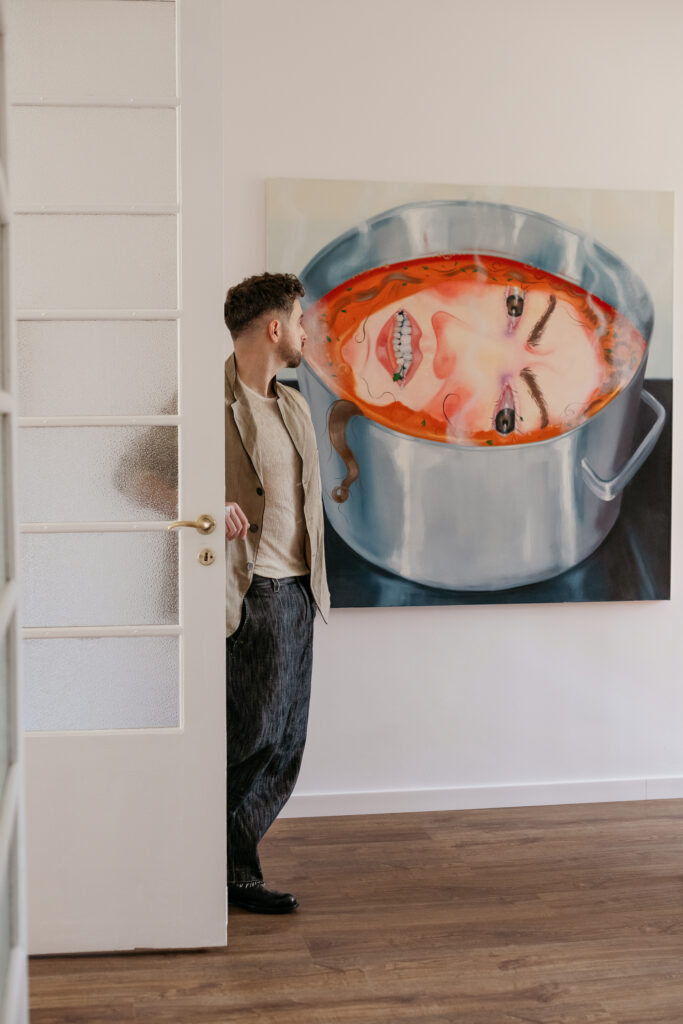“I am constantly seeking works by artists whose stories remain untold or underappreciated”
Collector's Interview | Michał Borowik
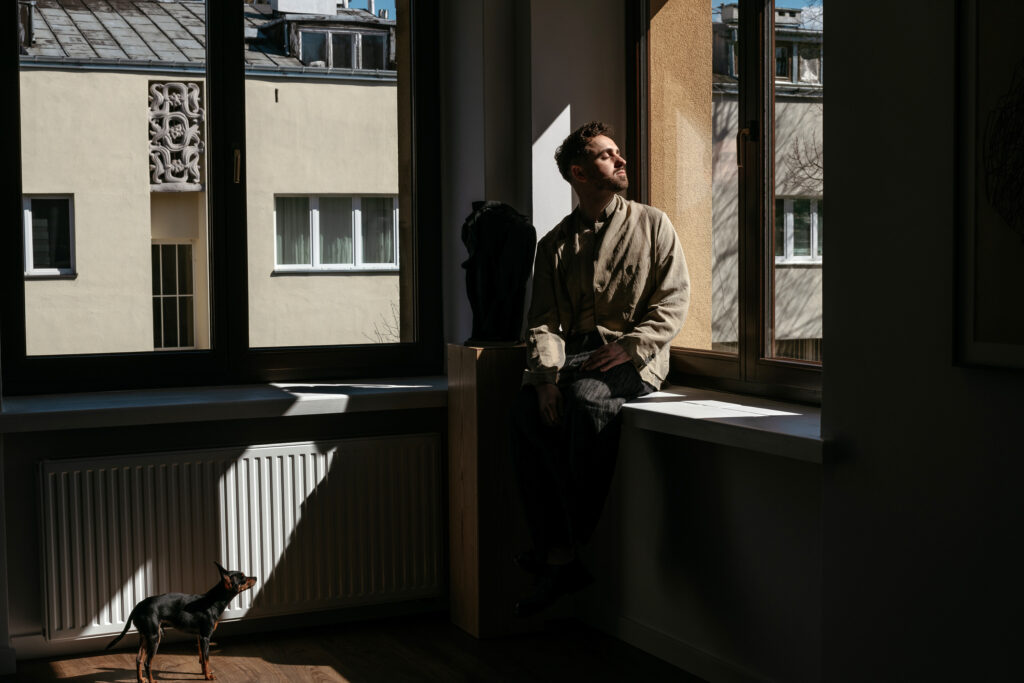
What began 20 years ago with a surprise discovery next to a dumpster has not only since then developed into an impressive collection of around 500 works – but more than that: The Polish collector and curator plays an important role in supporting up-and-coming talent from Central and Eastern Europe and campaigns for socio-political causes. In this interview, he talks about his unique journey into the world of contemporary art.
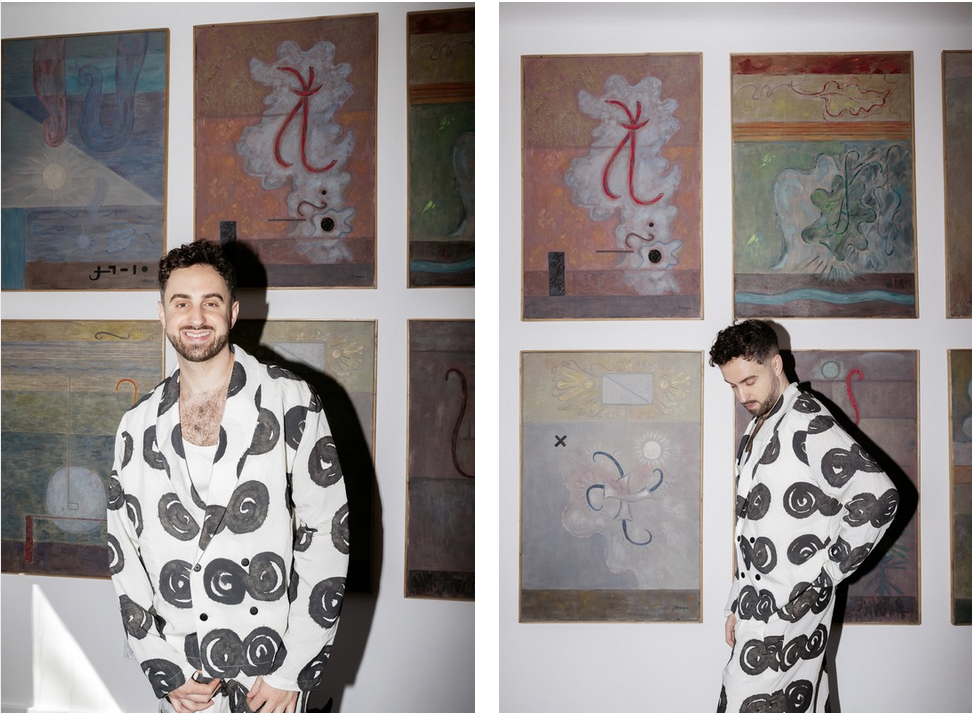 Michal Borowik in front of Janina Kraupe.
Michal Borowik in front of Janina Kraupe.
viennacontemporaryMag: Your collection had a unique beginning. Can you tell us about it and how it has developed since then?
Michał Borowik: My journey into collecting began in 2005 during a walk with my dog in my hometown, Zamość. I stumbled upon Edward Dwurnik’s painting from the Hitchhiking Journeys (1974) series, discarded near a housing estate dumpster. That serendipitous moment sparked a deep curiosity about art and its ability to uncover meaning in unexpected places. Over time, my approach evolved—from intuitive and spontaneous acquisitions to a more thoughtful and structured practice. As I wrote for one of my exhibitions: “Creating a collection is a continuous process—building, experiencing, crossing boundaries, and looking beyond the horizon of what we are shown.” Today, my collection includes over 500 works and reflects my personal and intellectual engagement with contemporary art.
viennacontemporaryMag: Which theme or focus do you follow in in your collection?
Michał Borowik: My collection doesn’t adhere to a specific theme but is guided by deeply personal criteria and intuition. Recurring motifs include memory, perception, and identity. I am fascinated by the question, “How much are we actually capable of seeing, and how far can our eyes reach?” Mateusz Sadowski’s Looking to the End perfectly embodies this idea, encouraging viewers to go beyond surface appearances and reflect on the limitations of contemporary vision. My collection also attempts to capture the complexity of history, particularly Poland’s turbulent art-collecting legacy. I often ask myself: What image of our times will we leave for future generations?
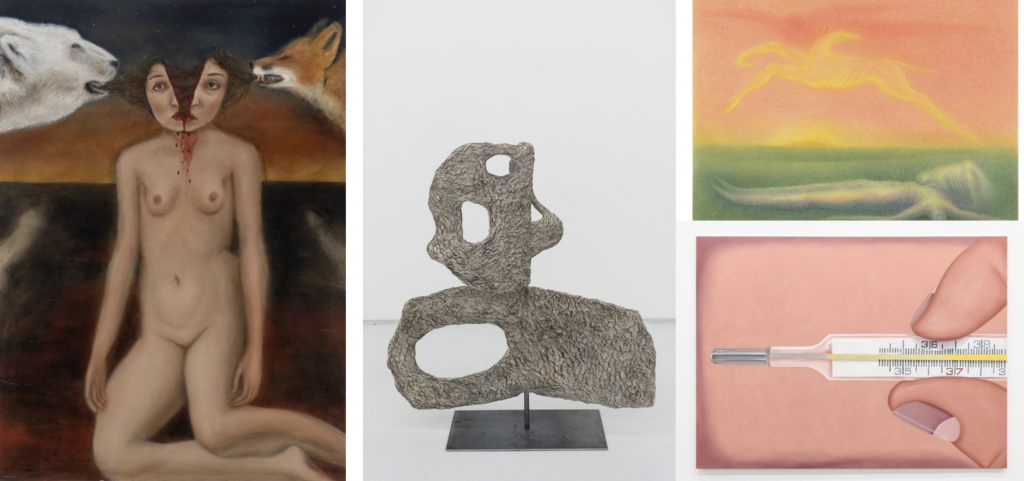 From left to right: Agata Słowak, Sytuacja z niedźwiadkiem polarnym i liskiem [A Situation with a Polar Bear Cub and a Little Fox], 2023, oil on canvas, 110 x 80 cm; Gizela Mickiewicz, Fleeting Plans, 2023, 105×85×60cm; Lera Dubistkaya, Valentine, 2022, oil, crayons on paper, 11.5 x 14.8 cm; Tomek Kręcicki, Hypochondriac, 2022, oil on canvas, 120 x 160 cm
From left to right: Agata Słowak, Sytuacja z niedźwiadkiem polarnym i liskiem [A Situation with a Polar Bear Cub and a Little Fox], 2023, oil on canvas, 110 x 80 cm; Gizela Mickiewicz, Fleeting Plans, 2023, 105×85×60cm; Lera Dubistkaya, Valentine, 2022, oil, crayons on paper, 11.5 x 14.8 cm; Tomek Kręcicki, Hypochondriac, 2022, oil on canvas, 120 x 160 cm
viennacontemporaryMag: Who are some of the artists that you’re excited about?
Michał Borowik: My collection focuses on Central and Eastern European art, with particular attention to artists from Ukraine and Belarus, such as Nikita Kadan, Kataryna Lysovenko, Veronika Hapchenko, Ala Savashevich, Lera Dubitskaya. I have been following the achievements of artists from Ukraine and Belarus for over 10 years, captivated by their bold exploration of collective memory, identity, and cultural heritage, often within the context of significant historical events. For instance, Nikita Kadan’s works delve into the complex relationships between history, forgetting, and decommunization, making his art universally relevant.
Equally important in my collection are Polish artists like Kinga Burek, Czesław Pius Ciapało, Wanda Czełkowska, Ewa Czwartos, Katarzyna Górna, Karolina Jabłońska, Julia Kowalska, Dominika Kowynia, Tomek Kręcicki, Ant Łakomsk, Krzysztof Mężyk, Paweł Olszewski, Alicja Pakosz, Cyryl Polaczek, Agata Słowak, Karolina Żądło, Jakub Julian Ziółkowski, and many others. I am drawn to their courage in addressing themes of identity, relationships, and emotional tension. Agata Słowak’s works balance intimacy and symbolism, exploring issues of gender and sexuality, while Wanda Czełkowska redefined the space of sculpture with her minimalist and timeless forms. Ewa Czwartos and Karolina Żądło create deeply sensitive works, examining corporeality and interpersonal relationships.
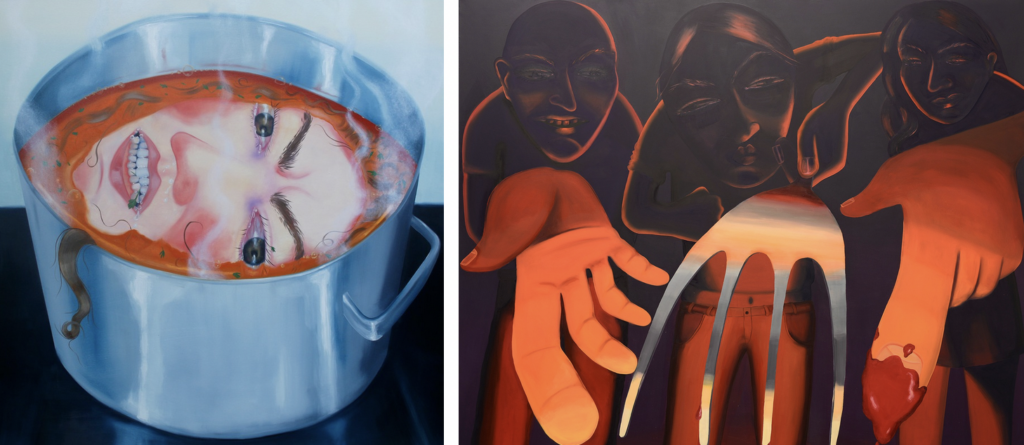 Karolina Jabłońska, Gotująca się głowa [Boiling Head], 2022, oil on canvas, 150 x 150 cm and Karolina Jabłońska, Grill [Barbecue], 2018, oil on canvas, 200 x 250 cm.
Karolina Jabłońska, Gotująca się głowa [Boiling Head], 2022, oil on canvas, 150 x 150 cm and Karolina Jabłońska, Grill [Barbecue], 2018, oil on canvas, 200 x 250 cm.
What connects all these artists is their ability to go beyond superficial narratives and provoke deeper reflection. I am constantly seeking works by artists whose stories remain untold or underappreciated, particularly women who deserve to be rediscovered and recognized, such as Janina Kraupe-Świderska.
viennacontemporaryMag: Beyond collecting, you show active engagement in promoting young artists.
Michał Borowik: I actively support these artists in Poland through initiatives such as the Borowik Foundation and Polish Art NOW. These platforms provide a space for Ukrainian and Belarusian creators to share their work, foster dialogue, and promote their artistic visions on a larger stage. Exhibitions like From East to West and A Story from the Bottom of a Well have been crucial in showcasing their talent and addressing the challenges they face.
viennacontemporaryMag: Which pieces in your collection have particularly unique backstories?
Michał Borowik: Edward Dwurnik’s Hitchhiking Journeys will always hold a special place in my heart as the piece that started my collection. Another standout work is Mateusz Sadowski’s Looking Through to the End, which challenges viewers to broaden their field of vision in a world dominated by technology. A significant moment for me was collaborating with Nikita Kadan during Warsaw Gallery Weekend in 2024—proceeds from the sale of his lithographs funded the creation of a sculpture commemorating the war in Ukraine. Each piece in my collection carries a unique story that enriches its context and significance.
viennacontemporaryMag: What role do galleries, art fairs, or direct relationships with artists play in your collecting process?
Michał Borowik: Direct relationships with artists are at the heart of my collecting philosophy. I want to understand their stories, challenges, and visions. Galleries and fairs, like viennacontemporary, are invaluable platforms for discovering talent and fostering dialogue. Events like viennacontemporary are excellent opportunities to expand perspectives and discover diverse artistic expressions.
viennacontemporaryMag: How do you see the role of contemporary art in society today, and how does your collection reflect those views?
Michał Borowik: I see contemporary art as both a mirror and a critique of our times. It reflects society’s anxieties, aspirations, and contradictions while provoking dialogue. My collection responds to these challenges by exploring themes like memory, perception, and identity in the context of overproduction and technological change. Initiatives like Polish Art NOW amplify this mission, making art more accessible and encouraging critical reflection. As I wrote for one of my exhibitions: “Art helps us look beyond the horizon of what we are shown.” This belief underpins my work as a collector and curator.
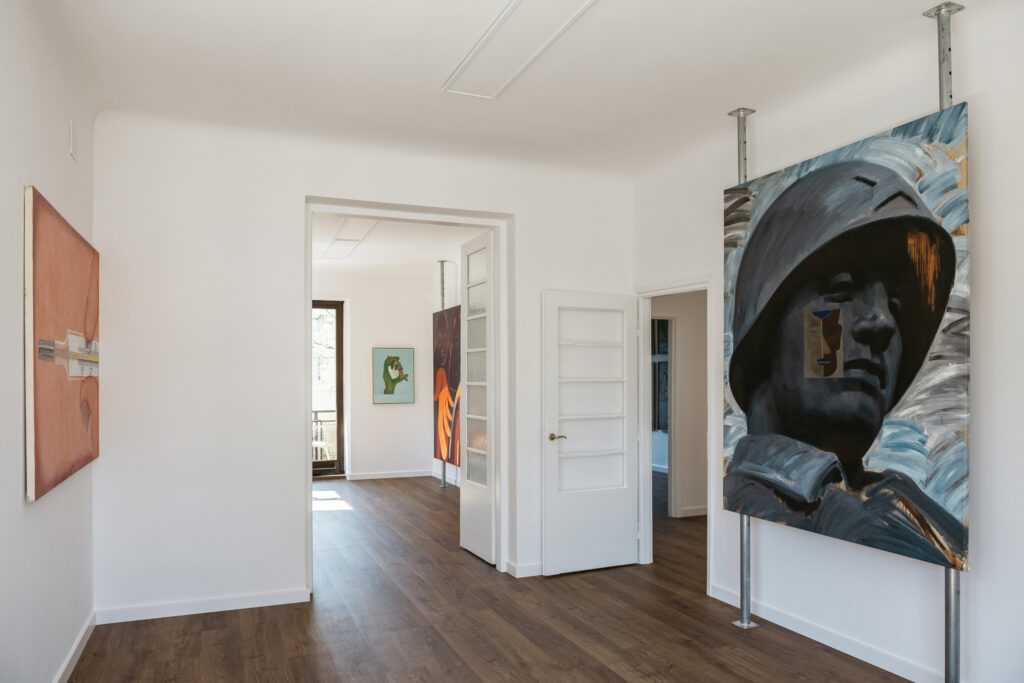
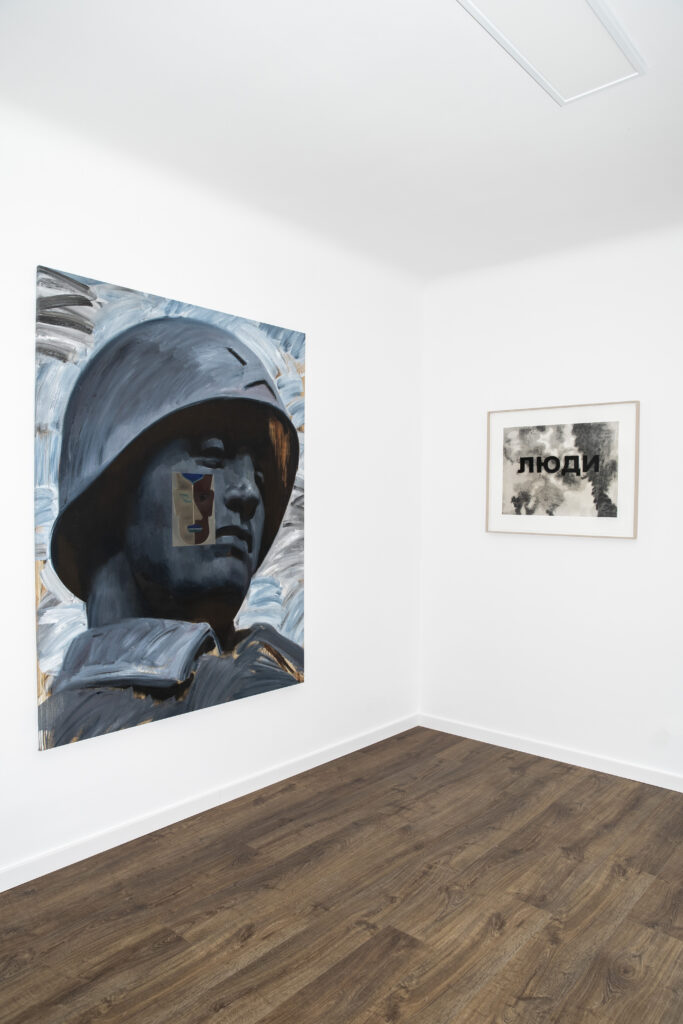 Nikita Kadan, Poeta I [Poet I], 2020, oil on canvas, 190 x 150 cm
Nikita Kadan, Poeta I [Poet I], 2020, oil on canvas, 190 x 150 cm
viennacontemporaryMag: What advice would you give to someone interested in starting their own collection of contemporary art?
Michał Borowik: Trust your intuition and explore what truly moves you. Collecting isn’t just about acquiring objects—it’s about building connections with artists, their stories, and the broader cultural context. Don’t be afraid to take risks, and let your collection evolve alongside you. Above all, treat your collection as a reflection of your own journey—it should provoke thought, inspire curiosity, and grow with your passions.
Photos: Natalia Poniatowska / Borowik Foundation Archive
© 2024, Borowik Foundation, Warsaw, PL

